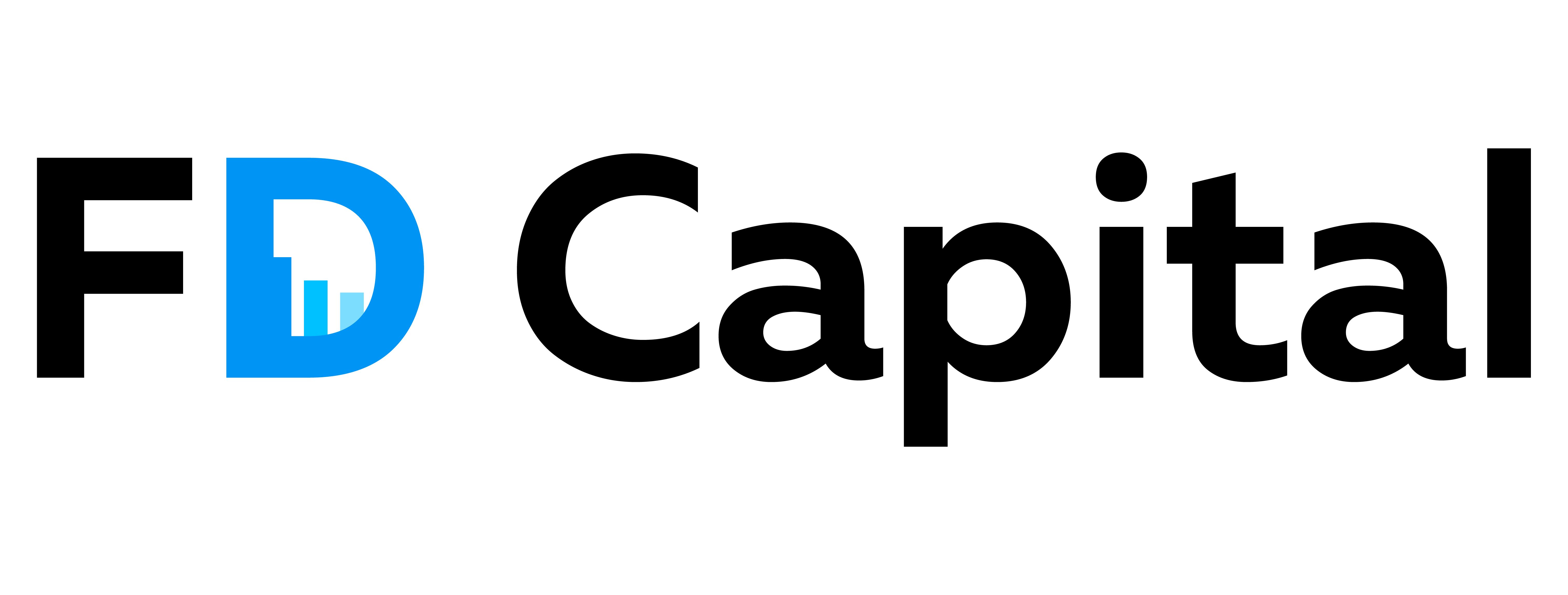How to Improve Communication and Drive Productivity in Finance Teams: Proven Strategies for Success

How to Improve Communication and Drive Productivity in Finance Teams: Proven Strategies for Success
Introduction
Effective communication is the cornerstone of any successful finance team. In an industry where precision, accuracy, and timely decision-making are paramount, the ability to convey information clearly and efficiently can significantly impact productivity and overall performance. However, communication challenges are not uncommon in finance teams, often leading to misunderstandings, errors, and delays.
In this article, we will explore proven strategies to enhance communication within finance teams, thereby driving productivity and fostering a collaborative work environment. By implementing these strategies, finance professionals can streamline their workflows, reduce the risk of errors, and ultimately achieve better outcomes for their organizations.
Understanding the Importance of Communication in Finance Teams
Enhancing Accuracy and Reducing Errors
Effective communication is crucial in finance teams to ensure accuracy and minimize errors. Financial data is often complex and requires precise interpretation and reporting. Miscommunication can lead to significant mistakes, which can have severe consequences for the organization. Clear and concise communication helps in verifying data, cross-checking figures, and ensuring that all team members are on the same page.
Facilitating Collaboration and Teamwork
Finance teams often work on projects that require input from multiple members. Good communication fosters a collaborative environment where team members can share insights, discuss strategies, and solve problems together. This collaboration is essential for tasks such as budgeting, forecasting, and financial analysis, where diverse perspectives can lead to more robust and well-rounded outcomes.
Streamlining Decision-Making Processes
In the fast-paced world of finance, timely decision-making is critical. Effective communication ensures that relevant information is disseminated quickly and accurately, enabling informed decisions. When team members communicate effectively, they can quickly address issues, evaluate options, and implement solutions, thereby driving productivity and achieving organizational goals.
Building Trust and Transparency
Trust and transparency are foundational to any successful team, and this is particularly true in finance, where the stakes are high. Open and honest communication helps build trust among team members, as well as between the finance team and other departments. Transparency in financial reporting and decision-making processes fosters a culture of accountability and integrity, which is essential for maintaining the confidence of stakeholders.
Supporting Change Management
The finance sector is constantly evolving, with new regulations, technologies, and market conditions emerging regularly. Effective communication is vital for managing these changes. It helps in disseminating information about new policies, training team members on new tools, and ensuring that everyone is aligned with the latest industry standards. This adaptability is crucial for maintaining compliance and staying competitive.
Enhancing Client and Stakeholder Relationships
Finance teams often interact with clients, investors, and other stakeholders. Clear and effective communication is essential for building and maintaining these relationships. It ensures that stakeholders are well-informed about financial performance, risks, and opportunities. Good communication also helps in managing expectations and addressing concerns promptly, thereby enhancing trust and satisfaction.
Promoting Continuous Improvement
Continuous improvement is a key objective for any finance team. Effective communication enables the sharing of feedback, lessons learned, and best practices. It encourages a culture of continuous learning and development, where team members feel comfortable discussing challenges and proposing solutions. This ongoing dialogue is essential for driving innovation and improving overall team performance.
Identifying Common Communication Barriers
Lack of Clarity and Precision
In finance teams, the need for precise and clear communication is paramount. Ambiguity in instructions or data can lead to costly errors. Misunderstandings often arise from vague language, unclear expectations, or incomplete information. Ensuring that all communications are specific and detailed can help mitigate these issues.
Information Overload
Finance professionals often deal with vast amounts of data and information. When too much information is shared at once, it can overwhelm team members, leading to important details being overlooked. Prioritizing and segmenting information can help manage this overload, ensuring that critical data is highlighted and easily accessible.
Hierarchical Barriers
In many finance teams, hierarchical structures can impede open communication. Junior team members may feel intimidated or reluctant to share their ideas or concerns with senior staff. Creating an inclusive environment where all team members feel valued and heard can help break down these barriers.
Technological Challenges
While technology can facilitate communication, it can also create barriers if not used effectively. Issues such as incompatible software, lack of training on communication tools, or over-reliance on email can hinder effective communication. Ensuring that all team members are proficient in the necessary tools and encouraging the use of collaborative platforms can enhance communication.
Cultural Differences
Finance teams often comprise individuals from diverse cultural backgrounds. Differences in communication styles, language barriers, and varying interpretations of non-verbal cues can lead to misunderstandings. Promoting cultural awareness and sensitivity within the team can help bridge these gaps.
Physical Separation
With the rise of remote work, physical separation has become a significant barrier to communication. The lack of face-to-face interaction can lead to feelings of isolation and miscommunication. Implementing regular virtual meetings and using video conferencing tools can help maintain a sense of connection and ensure clear communication.
Lack of Feedback
Without regular feedback, team members may be unaware of how their communication is perceived or if there are areas for improvement. Establishing a culture of constructive feedback can help individuals refine their communication skills and ensure that messages are being effectively conveyed and understood.
Emotional Barriers
Emotions can significantly impact communication. Stress, frustration, or lack of trust within the team can lead to defensive or aggressive communication styles. Fostering a supportive and respectful team environment can help mitigate these emotional barriers, promoting more open and effective communication.
Implementing Effective Communication Tools and Technologies
Assessing Current Communication Needs
Before selecting any tools or technologies, it’s crucial to assess the current communication needs of your finance team. This involves understanding the specific challenges your team faces, such as delays in information sharing, lack of real-time updates, or difficulties in collaborating on financial reports. Conduct surveys, interviews, and workflow analyses to gather insights into these pain points.
Choosing the Right Communication Tools
Instant Messaging Platforms
Instant messaging platforms like Slack or Microsoft Teams can significantly enhance real-time communication. These tools allow team members to create channels for specific projects, departments, or topics, facilitating organized and focused discussions. Features like file sharing, direct messaging, and integration with other software make these platforms indispensable for finance teams.
Video Conferencing Solutions
For remote or hybrid teams, video conferencing tools such as Zoom or Google Meet are essential. These platforms support virtual meetings, screen sharing, and recording capabilities, making it easier to discuss complex financial data and collaborate on projects. Regular video meetings can also help maintain team cohesion and ensure everyone is aligned on goals and tasks.
Project Management Software
Tools like Asana, Trello, or Monday.com can streamline project management and task tracking. These platforms offer features such as task assignments, deadlines, progress tracking, and collaboration spaces. By integrating these tools with your communication platforms, you can ensure that all team members are aware of their responsibilities and deadlines, thereby improving overall productivity.
Integrating Communication Tools with Financial Software
To maximize efficiency, it’s important to integrate your communication tools with the financial software your team uses. For example, integrating Slack with accounting software like QuickBooks or Xero can automate notifications for financial transactions, approvals, and other critical updates. This ensures that relevant information is promptly communicated to the right team members, reducing the risk of errors and delays.
Ensuring Data Security and Compliance
When implementing new communication tools, data security and compliance should be top priorities. Finance teams handle sensitive information, so it’s essential to choose tools that offer robust security features such as end-to-end encryption, multi-factor authentication, and compliance with regulations like GDPR or SOX. Conduct thorough security assessments and work with your IT department to ensure that all tools meet your organization’s security standards.
Training and Onboarding
Effective implementation of new communication tools requires comprehensive training and onboarding. Develop training programs that cover the functionalities and best practices for using each tool. Provide resources such as user manuals, video tutorials, and FAQs to help team members get up to speed quickly. Regularly scheduled training sessions can also address any ongoing issues and ensure that the team is using the tools to their full potential.
Monitoring and Continuous Improvement
Once the tools are implemented, it’s important to continuously monitor their effectiveness and make necessary adjustments. Collect feedback from team members to identify any issues or areas for improvement. Use analytics and reporting features within the tools to track usage patterns and measure the impact on productivity. Regularly review and update your communication strategy to ensure it remains aligned with the evolving needs of your finance team.
Encouraging a Culture of Open Communication
Establish Clear Communication Channels
Creating well-defined communication channels is essential for fostering open communication within finance teams. Utilize tools such as Slack, Microsoft Teams, or other collaboration platforms to ensure that team members can easily share information and updates. Clearly outline the purpose of each channel, whether it’s for project updates, general inquiries, or urgent issues, to avoid confusion and ensure that messages reach the right audience.
Promote Transparency
Transparency is a cornerstone of open communication. Encourage leaders and team members to share relevant information openly, including project statuses, financial reports, and organizational changes. Regularly scheduled meetings, such as weekly check-ins or monthly town halls, can provide a platform for transparent communication. This openness helps build trust and ensures that everyone is on the same page.
Encourage Feedback
Creating an environment where feedback is welcomed and valued is crucial. Implement regular feedback sessions where team members can share their thoughts and suggestions. Use anonymous surveys or suggestion boxes to gather honest feedback without fear of retribution. Act on the feedback received to show that it is taken seriously and to foster a culture of continuous improvement.
Lead by Example
Leadership plays a pivotal role in setting the tone for open communication. Leaders should model the behavior they wish to see by being approachable, actively listening, and openly sharing information. When leaders demonstrate a commitment to open communication, it encourages team members to follow suit.
Provide Training and Resources
Equip your team with the skills and tools they need to communicate effectively. Offer training sessions on communication best practices, active listening, and conflict resolution. Provide resources such as communication guidelines or templates to help team members articulate their messages clearly and professionally.
Foster a Safe Environment
Creating a safe environment where team members feel comfortable expressing their ideas and concerns is essential. Establish a no-blame culture where mistakes are viewed as learning opportunities rather than failures. Encourage open dialogue and ensure that all voices are heard, regardless of hierarchy or tenure.
Recognize and Reward Open Communication
Acknowledge and reward team members who exemplify open communication. This can be done through formal recognition programs, shout-outs in team meetings, or performance reviews. Recognizing these behaviors reinforces their importance and encourages others to follow suit.
Utilize Technology
Leverage technology to facilitate open communication. Use project management tools like Asana or Trello to keep everyone informed about project progress and deadlines. Implement video conferencing tools for remote teams to ensure face-to-face interaction, which can help build stronger relationships and improve understanding.
Regularly Review and Adjust Communication Strategies
Communication needs can evolve over time, so it’s important to regularly review and adjust your strategies. Solicit feedback from the team on what’s working and what’s not, and be willing to make changes as needed. This iterative approach ensures that your communication practices remain effective and relevant.
Training and Development for Enhanced Communication Skills
Identifying Skill Gaps
Understanding the current communication capabilities within the finance team is the first step. Conducting a thorough skills assessment can help identify areas where team members may need improvement. This can be achieved through:
- Surveys and self-assessments
- Peer reviews
- Performance evaluations
- Feedback from stakeholders
Customized Training Programs
Once skill gaps are identified, tailored training programs can be developed to address these specific needs. These programs should focus on:
- Active listening
- Clear and concise messaging
- Non-verbal communication
- Emotional intelligence
- Conflict resolution
Workshops and Seminars
Interactive workshops and seminars can provide hands-on experience and practical knowledge. These sessions can cover:
- Effective meeting management
- Presentation skills
- Negotiation techniques
- Cross-functional communication
Role-Playing and Simulations
Role-playing exercises and simulations can help team members practice real-life scenarios in a controlled environment. This can enhance their ability to:
- Handle difficult conversations
- Navigate complex financial discussions
- Collaborate with other departments
Mentorship and Coaching
Pairing less experienced team members with seasoned professionals can foster a culture of continuous learning. Mentorship and coaching can provide:
- Personalized feedback
- Guidance on best practices
- Support in developing communication strategies
Online Courses and E-Learning
Leveraging online platforms can offer flexible learning opportunities. E-learning modules can cover a wide range of topics, such as:
- Business writing
- Virtual communication
- Cross-cultural communication
Regular Feedback and Continuous Improvement
Establishing a system for regular feedback can help ensure that communication skills are continuously improved. This can include:
- One-on-one meetings
- Performance reviews
- 360-degree feedback
Leveraging Technology
Utilizing communication tools and platforms can streamline interactions and enhance clarity. Tools such as:
- Video conferencing software
- Collaboration platforms
- Project management tools
Encouraging a Culture of Open Communication
Promoting an environment where open communication is encouraged can lead to more effective teamwork. This can be achieved by:
- Encouraging transparency
- Fostering an inclusive atmosphere
- Recognizing and rewarding effective communication
Measuring the Impact
To ensure the effectiveness of training programs, it is crucial to measure their impact. This can be done through:
- Pre- and post-training assessments
- Monitoring key performance indicators (KPIs)
- Gathering feedback from team members and stakeholders
Measuring the Impact of Improved Communication on Productivity
Key Performance Indicators (KPIs)
Employee Engagement
Employee engagement can be a strong indicator of how effective communication is within a finance team. Higher engagement levels often correlate with better communication practices. Surveys, feedback forms, and regular check-ins can help gauge employee sentiment and engagement.
Task Completion Rates
Monitoring the rate at which tasks are completed can provide insights into productivity. Improved communication often leads to clearer instructions and better understanding of tasks, which can result in faster completion times.
Error Rates
A reduction in error rates can be a direct result of improved communication. Clearer instructions and better collaboration can minimize misunderstandings and mistakes, leading to more accurate work.
Time to Resolution
The time it takes to resolve issues or complete projects can be a critical metric. Improved communication can streamline processes, reduce bottlenecks, and expedite problem-solving, thereby reducing the overall time to resolution.
Tools and Technologies
Communication Platforms
Utilizing tools like Slack, Microsoft Teams, or other communication platforms can facilitate better information flow. Tracking the usage and effectiveness of these tools can provide data on how communication improvements are impacting productivity.
Project Management Software
Tools like Asana, Trello, or Jira can help in tracking project progress and task completion rates. These platforms often come with built-in analytics that can measure the impact of communication on project timelines and deliverables.
Analytics and Reporting Tools
Using analytics tools to track communication patterns and their impact on productivity can offer valuable insights. Tools like Google Analytics, Tableau, or Power BI can help in visualizing data and identifying trends.
Surveys and Feedback
Employee Surveys
Conducting regular employee surveys can provide qualitative data on how communication improvements are perceived. Questions can focus on clarity of instructions, ease of collaboration, and overall satisfaction with communication channels.
360-Degree Feedback
Implementing a 360-degree feedback system can offer a comprehensive view of communication effectiveness. This involves collecting feedback from peers, subordinates, and supervisors to get a well-rounded perspective.
Exit Interviews
Exit interviews can provide insights into communication issues that may have contributed to an employee’s decision to leave. This feedback can be invaluable for making further improvements.
Case Studies and Real-World Examples
Internal Case Studies
Conducting internal case studies can help in understanding the specific impact of communication improvements within your finance team. Documenting before-and-after scenarios can provide concrete evidence of productivity gains.
Industry Benchmarks
Comparing your team’s performance with industry benchmarks can offer a broader perspective. Understanding how other finance teams measure and achieve productivity through improved communication can provide actionable insights.
Continuous Improvement
Regular Audits
Conducting regular audits of communication practices can help in identifying areas for improvement. These audits can be scheduled quarterly or bi-annually to ensure that communication strategies remain effective.
Training and Development
Investing in ongoing training and development programs can ensure that team members are equipped with the skills needed for effective communication. Workshops, seminars, and online courses can be valuable resources.
Feedback Loops
Establishing continuous feedback loops can help in making real-time adjustments to communication strategies. Regular check-ins and open forums for discussion can facilitate ongoing improvements.
Case Studies and Real-World Examples
Case Study 1: Goldman Sachs – Leveraging Technology for Seamless Communication
Goldman Sachs, a leading global investment banking, securities, and investment management firm, has long been at the forefront of leveraging technology to enhance communication within its finance teams. The firm implemented a comprehensive internal communication platform that integrates various tools such as instant messaging, video conferencing, and collaborative document editing.
Key Strategies
- Unified Communication Platform: By consolidating multiple communication tools into a single platform, Goldman Sachs ensured that team members could easily switch between different modes of communication without losing context.
- Real-Time Collaboration: The platform enabled real-time collaboration on financial models and reports, significantly reducing the time required for review and approval processes.
- Data Security: Given the sensitive nature of financial data, the platform was equipped with robust security features, including end-to-end encryption and multi-factor authentication.
Outcomes
- Increased Efficiency: The unified platform reduced the time spent on administrative tasks, allowing team members to focus more on strategic activities.
- Enhanced Decision-Making: Real-time access to updated financial data and collaborative tools improved the quality and speed of decision-making processes.
Case Study 2: Deloitte – Implementing Agile Methodologies
Deloitte, one of the “Big Four” accounting organizations, adopted agile methodologies to improve communication and productivity within its finance teams. The firm recognized that traditional project management approaches were not sufficient to meet the dynamic needs of modern financial operations.
Key Strategies
- Scrum Framework: Deloitte implemented the Scrum framework, which involves short, iterative cycles called sprints. This approach facilitated regular check-ins and continuous feedback.
- cross-functional teams: By forming cross-functional teams, Deloitte ensured that different expertise areas were represented, fostering better communication and collaboration.
- Daily Stand-Ups: Daily stand-up meetings were introduced to keep team members aligned and address any roadblocks promptly.
Outcomes
- Improved Flexibility: The agile approach allowed Deloitte to quickly adapt to changes in the financial landscape, ensuring that projects remained on track.
- Higher Engagement: Regular interactions and feedback loops increased team engagement and morale, leading to higher productivity.
Case Study 3: JP Morgan Chase – Enhancing Communication through Training Programs
JP Morgan Chase, a global leader in financial services, recognized the importance of effective communication skills in driving productivity. The firm invested in comprehensive training programs aimed at improving both verbal and written communication among its finance teams.
Key Strategies
- Communication Workshops: Regular workshops were conducted to teach best practices in communication, including active listening, clear articulation of ideas, and effective email writing.
- Role-Playing Scenarios: Employees participated in role-playing scenarios to practice and refine their communication skills in a controlled environment.
- Feedback Mechanisms: A structured feedback mechanism was established to provide employees with constructive feedback on their communication skills.
Outcomes
- Enhanced Clarity: Improved communication skills led to clearer and more concise exchanges of information, reducing misunderstandings and errors.
- Better Team Dynamics: Enhanced communication fostered a more collaborative and supportive team environment, contributing to overall productivity.
Case Study 4: HSBC – Utilising Data Analytics for Informed Communication
HSBC, one of the world’s largest banking and financial services organizations, leveraged data analytics to enhance communication within its finance teams. By analyzing communication patterns and data, HSBC was able to identify areas for improvement and implement targeted strategies.
Key Strategies
- Communication Audits: Regular audits of communication channels were conducted to assess their effectiveness and identify bottlenecks.
- Data-Driven Insights: Analytics tools were used to gather insights into communication patterns, such as response times and message clarity.
- Targeted Interventions: Based on the insights gained, targeted interventions were implemented to address specific issues, such as delayed responses or unclear messaging.
Outcomes
- Optimized Communication Channels: The use of data analytics helped HSBC optimize its communication channels, ensuring that information flowed smoothly and efficiently.
- Proactive Issue Resolution: By identifying and addressing communication issues proactively, HSBC was able to prevent potential disruptions and maintain high levels of productivity.

Adrian Lawrence FCA with over 25 years of experience as a finance leader and a Chartered Accountant, BSc graduate from Queen Mary College, University of London.
I help my clients achieve their growth and success goals by delivering value and results in areas such as Financial Modelling, Finance Raising, M&A, Due Diligence, cash flow management, and reporting. I am passionate about supporting SMEs and entrepreneurs with reliable and professional Chief Financial Officer or Finance Director services.












